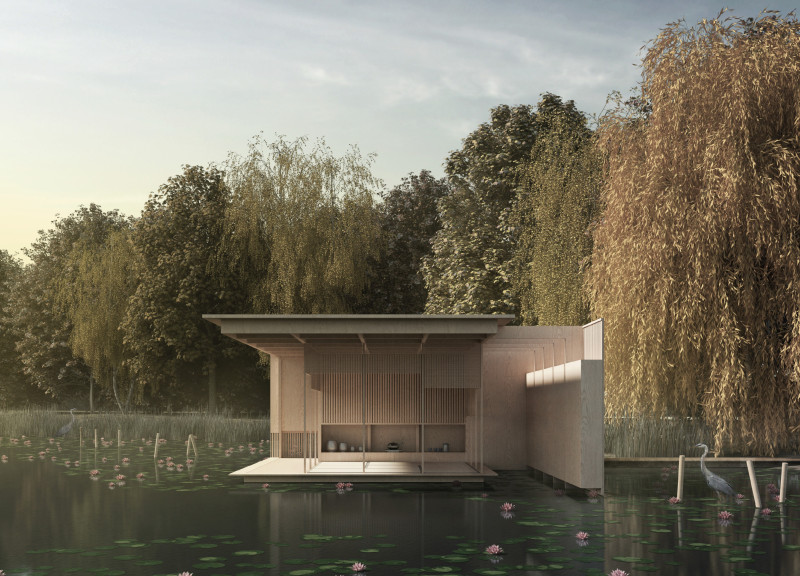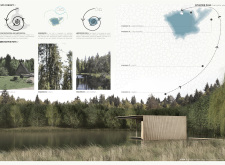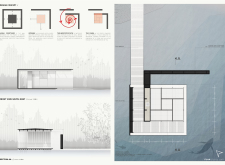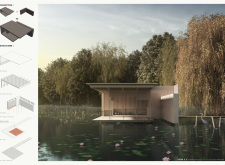5 key facts about this project
The design functions primarily as a retreat and contemplative space, catering to individuals seeking solitude and a connection with the surrounding environment. The cabin serves as the focal point, structured to promote fluid movement throughout its spaces while providing a respite from the outside world. Visitors are guided through a meditative path that meanders through the landscape, facilitating a gradual transition from the hustle of daily life into a more peaceful mental state.
Key elements of the design include a wooden structure that elegantly integrates with the natural setting. The choice of materials, such as sustainably sourced wood and glass, emphasizes transparency and lightness, allowing natural light to permeate the interior and offering expansive views of the surrounding greenery and water bodies. The extensive use of glass, particularly, blurs the boundaries between indoor and outdoor spaces, enhancing the experience of being one with nature.
The cabin configuration features open, adaptable spaces designed not only for individual reflection but also for communal gatherings. Spaces dedicated to thematic activities such as tea preparation underscore the project's commitment to mindfulness and ritualistic experiences. Additionally, terraces and transitional areas are strategically designed to provide different vantage points of the scenic landscape, enabling users to engage with their environment from various perspectives.
What distinguishes "The Lantern" from conventional architectural projects is its unique design approach. It incorporates elements from both Japanese and Latvian architectural philosophies. This fusion is apparent in the structural and aesthetic decisions, promoting simplicity and a genuine connection to tradition while embracing modern sustainable practices. The deliberate layering of experiences along the journey to the cabin encourages users to engage thoughtfully with their surroundings, fostering a sense of introspection.
The architectural design thoughtfully addresses aspects of sustainability and environmental consciousness, ensuring that the structure coexists with its landscape. The use of durable and environmentally friendly materials aligns with contemporary design ideals that prioritize ecological stewardship. The project embodies the belief that architecture can play a pivotal role in enhancing well-being, encouraging a lifestyle that reflects harmony with nature.
For those interested in further exploring the nuances of this architectural design, examining the architectural plans, sections, and various designs of "The Lantern" will provide deeper insights into its conceptual framework and functionality. This project stands as a refined testament to how thoughtful architectural practices can create spaces that not only serve functional purposes but also nurture the human spirit and foster a profound connection with the natural world.


























